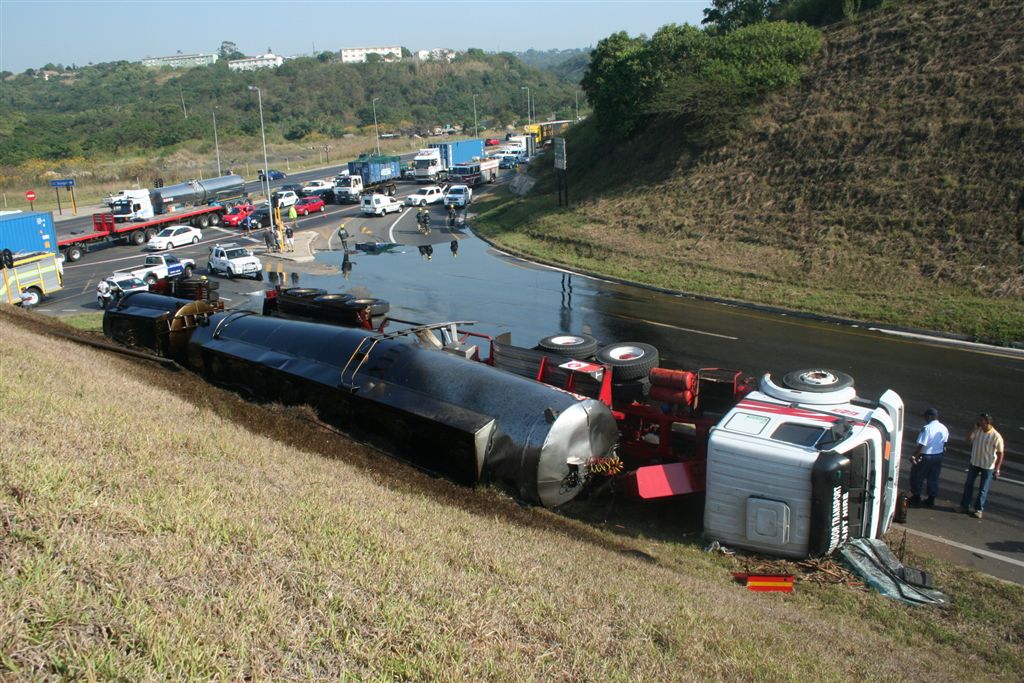Defensive driving specialist and long-time tolling opponent, Rob Handfield – Jones, has raised concerns that SANRAL’s tolling of Gauteng’s freeways would increase the number of hazardous materials (hazmat) vehicles passing through residential areas as operators sought to avoid tolled roads. He reminded the public that one of the world’s greatest hazmat vehicle disasters involved a tanker truck driving using an alternative route to avoid a toll road.
“The Los Alfaques disaster in Spain was an appalling tragedy in the late 1970s in which hundreds of people were burned to death,” he said. “The driver of a tanker truck carrying flammable liquid had been instructed by his employer to use a rural route to avoid motorway tolls,” he explained. The driver lost control of the vehicle next to the Los Alfaques camping ground on the east coast of Spain and crashed. The tanker ruptured, causing flammable gas to escape into the air and ignite. More than 200 people are known to have died, with over 200 more severely injured.
Handfield – Jones said that if the disaster had occurred on the open motorway the death toll would likely have been a fraction of what it was. He explained that South African transport operators had a history of using alternative routes to cut out tolling costs despite SANRAL’s stance that using better-quality toll roads was beneficial to operators because such roads cause less vehicle damage. “The problem is that vehicle repair costs can be deferred, but tolls can’t, which is why some operators are happy to avoid tolled roads and run deathtrap vehicles which are unlikely to be detected because of inadequate enforcement,” he added. “Avoiding tolled routes is like overloading: it damages the vehicle, but it increases cash flow, and when times get tougher, cash flow is a very valuable thing to an operator. I absolutely believe that the Gauteng toll roads will drive hazmat vehicles into the suburbs,” he said.
He expressed the view that a minimal number of vehicles carrying hazardous cargoes in suburbs was acceptable for essential purposes, such as delivering fuel to filling stations, but that further vehicle volumes would be a needless risk. “SANRAL will no doubt deny this, but they can’t deny the potential consequences of a tanker full of LPG or 30 tons of petrol catching fire in a residential area,” he said. “Sasolburg nearly learned the hard way with its tanker crash and fire of 2011.”
Handfield – Jones said that if hazmat vehicles were encouraged to remain on freeways, not only was their risk of crashing lower, but there was greater separation between them and the population, even in cases where freeways passed through built-up areas. “Which is preferable: a burning tanker 100 metres away on a freeway or ten metres from a block of flats?” he asked. “Tolling urban freeways is inevitably going to drive heavy vehicles and hazardous cargoes into our suburbs, and this is yet another reason that roadbuilding should be funded by an inexpensive fuel levy instead,” he concluded.
